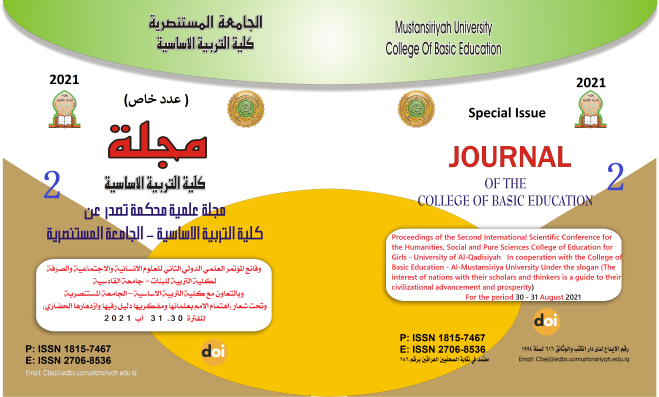The impact of the Husseini renaissance on Iraqi poetry in the seventh century AH The seven upper poems as a model
Main Article Content
Abstract
Poetry is one of the important means of immortalizing the ideas and events that constitute the identity of the nation, and define its intellectual and cultural features within the framework of the historical era from which it emerges, as well as the extension of the historical eras that precede it in order to communicate literary and intellectual and the common civilizational development between them, which is determined by the nature of society, and what it is exposed to. In some cases, our Arab literary heritage in the seventh century AH in Iraq won poets with poetic talents, and given that poets walk in lines that are almost similar in ideas and thoughts, I decided to stand with the poet Ibn Abi al-Hadid in the seven upper poems as a model in embodying the dimensions of the Husseini revolution. This research dealt with (The Impact of the Hussainiya Renaissance on Iraqi Poetry in the Seventh Hijri Century as an example) with an introduction and a preface that summarized an overview of the seven Alawiyat poems, in addition to the definition of the poet. The House () in the incident of Tuff, and the psychological dimension, as for the second topic / the role of Aqila Zainab () in the Battle of Tuff, all of which undertook to highlight The role of poetry and its importance in the embodiment of events and facts, in addition to the role of the poet and what he contributed to creativity and development in the movement of Arab poetry, then this study concluded with a conclusion in which it summarized the results it reached, the most important of which is: what the poet of this era represented as the natural extension of Arabic poetry in all his eras In the contents and ideas that he put into his poems, as the poet portrayed the historical dimensions of the Husseini revolution in all its details, through his embodiment of the reality and his depiction of the principles and goals of the Husseini revolution and its leader, Imam Hussein (), the character in which the flame of prophecy met with human idealism, which shook hearts and exploded ideas towards its goals that It revolved around the divine right that Imam al-Husayn came out to, that bloody exodus to devote a truth to the souls, asking for reform in the nation of his grandfather, the Messenger of God so that the creed would remain a beacon and the truth would guide those who were loyal to him. And his companions, a constant awakening and a constant reminder of the transcendent principles that were redeemed by these pure souls, and the poet also harnessed his talents and culture in spreading sincere feelings and feelings in the ferment of sorrow and the affliction of the afflicted .
Article Details

This work is licensed under a Creative Commons Attribution-ShareAlike 4.0 International License.
